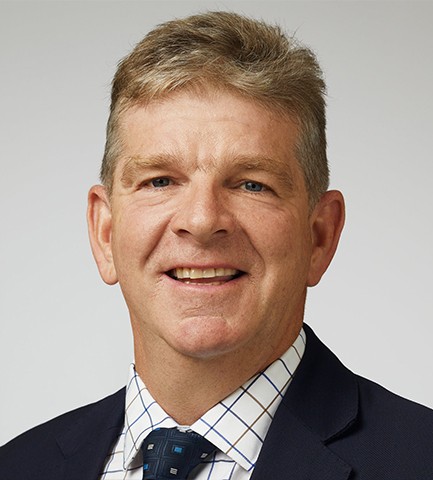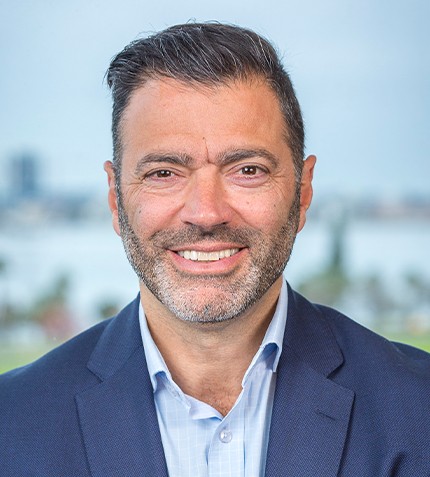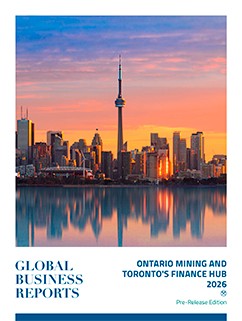
"Firefinch is a growing junior with the production profile of a mid-tier gold miner and our investors have the added benefit of currently possessing one of the world’s largest undeveloped lithium assets, so it’s a very exciting time for the company and our stakeholders."
Michael Anderson
MANAGING DIRECTOR, FIREFINCH
Could you update us on the latest developments at the Morila Gold Mine over the past year?
It was only November last year that Firefinch – then called Mali Lithium – acquired Morila from Barrick and AngloGold. We inherited a producing operation from the retreatment of tailings and the next phase was to recommence mining from a couple of satellite pits, starting with the Morila Pit 5 which sits on the flank of the main pit, the Morila Super Pit. Most recently, we began mining at another satellite, the Viper Pit. We are now preparing to enter the main pit, having started dewatering it in May this year. In early 2021 we began the refurbishment and reconditioning of the crushing and grinding circuit (the comminution circuit). We are feeding our 4.5 million ton processing circuit with fresh ore as part of our transition into higher production.
Could you walk us through the three-year plan to increase production at Morila?
We have outlined a staged approach to see Morila producing 200koz by 2024. What’s exciting is that we are just getting started. Over the next 6-12 months, mining will come from the satellite pits, but once we have de-watered and pre-stripped the Morila Super Pit, we’ll resume mining the main ore body. The Super Pit at Morila is one the world’s great gold deposits, having produced over 7.5Moz of gold since 2000 at grades that were among the highest in the world, earning it the moniker “Morila the Gorilla”.
By 2022 when we will have added ore from the main pit, production should increase to 120,000oz. When the main pit takes the entirety of our feed, we’re looking at total production guidance of 170,000oz in 2023 and 200,000oz by 2024. From there on, our job is to maintain these levels. The high-grade intersections we’ve had indicate the potential for underground exploration, which can potentially push production to 250,000oz.
Overall the goal is to bring the mine to a 10-year LOM at 150-200k oz gold/year, excluding any significant drilling programs. The first drill hole in the high-grade portion at Morila returned 10m at an average of 30g/t Au which gives us confidence this ore body will continue to deliver, and the 10 years LOM can grow. Through further optimization, we expect to reduce our AISC of US$1,100/oz to under $1,000/oz.
Firefinch entered a JV with Ganfeng to demerge its Goulamina lithium project and create a new company, Leo Lithium. What is the strategic motivation behind creating Leo Lithium?
Lithium sentiment was high in 2016-2017, but when the company completed the Goulamina feasibility study (FS) a year ago, the market wasn’t as receptive. The Morila acquisition, which came about at around the same time, was transformational, taking the company into a different space as an emerging mid-tier producer. A company like us often struggles to get wholesome valuations for its different assets if these are in different spaces. This is not to say the market is unsophisticated, but it does prefer the simplicity of having an exact picture of the number of ounces produced and the cost structure for each asset, individually. In our investor base, some people invest in gold, others in lithium. By demerging, we give each asset its own identity and lease of life, so that stakeholders end up with two pieces of paper and they can decide if they want to invest in one, both, or neither.
Considerable progress has been made advancing Goulamina over the past few months. The key takeaway is that following the proposed demerger in 2022, Goulamina will be substantially funded, with engineering and procurement well progressed and 50km of drilling already underway. Importantly, Goulamina will be on a quick path to production, expected in 2023, and in an enviable position to take advantage of prevailing very strong lithium market conditions.
How is mining in Mali perceived by investors given the political uncertainty?
There has been well-publicized instability in Mali as the government tries to work towards democratic elections in February. I went to Mali in early June just a few days after the most recent bout of instability, and what I saw on the ground, commercially and operationally, is that business goes on as usual. The market can be penalizing at times, so it is up to us and the Malian government to demonstrate that Mali does carry on as usual, to help investors make informed choices. Many investors are pleased to see us report on our trip, but we can never fully escape this perception. I’ve been involved in many African projects in Burkina Faso, the DRC, Ghana, among others, so I look at the situation with different eyes, but many investors have never been to Africa, and they often jump to a perception of high risk, without complete justification. There is no denying that there has been political instability, but what shines through is the quality of the assets and the track record of companies like Barrick, B2Gold, Resolute, and Anglo American, all with successful operating histories in Mali.
Do you have a final message you would like to share with our international readers?
Firefinch and Leo Lithium are setting out to deliver value to all stakeholders, from our listed shareholders to the Malian government, and the local communities. We deliver very active and transparent newsflow telling people exactly what we’re doing, and we enjoy a great relationship with the Malian government. Firefinch is a growing junior with the production profile of a mid-tier gold miner and our investors have the added benefit of currently possessing one of the world’s largest undeveloped lithium assets, so it’s a very exciting time for the company and our stakeholders. In the future, we will be looking at the M&A space for new assets to become a multiple mine producer.










